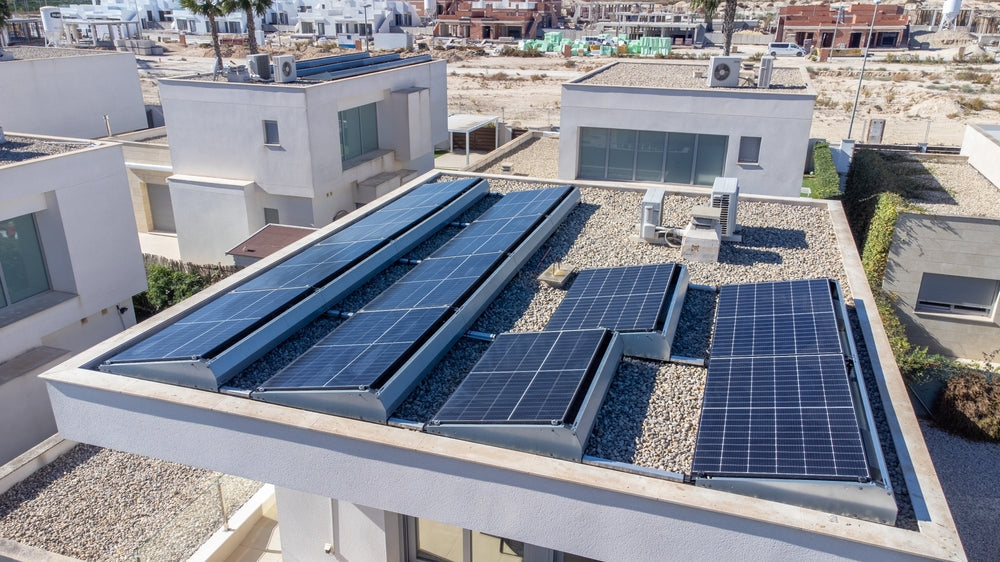
Introduction: Cooling Comfort with Clean Energy
As temperatures soar across the globe, air conditioners are no longer a luxury — they’re a necessity. But running an air conditioner for hours on traditional electricity can quickly inflate your energy bill. That’s why many homeowners and business owners are turning to solar power. Using solar panels to run your AC can be a smart investment that cuts costs while reducing your environmental impact.
But a common question arises: How many solar panels do you need to run an air conditioner? The answer depends on several factors, including the type of air conditioner, energy consumption, sunlight availability, and the efficiency of your solar panels. In this blog, we’ll walk you through the essential steps to calculate your solar needs while keeping the content practical, clear, and friendly.
Understanding Solar Panel Types: Choosing the Right Fit
When deciding how many solar panels you need for your air conditioner, panel quality matters just as much as quantity. Several leading technologies offer different levels of efficiency and output. In particular, options like bifacial solar panels, Jinko solar panels, and astroenergy solar panels are highly sought after in residential and commercial setups.
-
Bifacial solar panels generate power from both sides of the panel, capturing reflected sunlight from rooftops or ground surfaces. This dual-sided absorption increases total energy output, making them ideal for high-performance needs like cooling systems.
-
Jinko solar panels are known for their efficiency, affordability, and durability. They’re a favorite in warm climates, providing consistent output even under high temperatures.
-
Astroenergy solar panels (also known as Astronergy) are Tier-1 rated and offer high-efficiency monocrystalline and bifacial modules that perform well in both residential and industrial environments.
Choosing the right brand can reduce the number of panels needed by maximizing efficiency per square foot. So if space is limited or energy demand is high, investing in higher-quality panels can be more effective than simply installing more.
Calculating Energy Needs: AC Power Consumption
Before we jump into the number of solar panels, we need to understand how much power your air conditioner uses. Most AC units have a label showing power consumption in watts or kilowatts. Here’s a quick breakdown of common air conditioning units and their average consumption:
-
1-ton split AC: 1.2 to 1.5 kW per hour
-
1.5-ton split AC: 1.5 to 2.0 kW per hour
-
2-ton split AC: 2.5 to 3.0 kW per hour
-
Window AC (1 ton): 1.0 to 1.3 kW per hour
-
Inverter ACs: Use variable energy but average around 0.8 to 1.5 kW
If you run a 1.5-ton split AC for 8 hours a day, that’s around 12 to 16 kWh daily. Multiply that by the number of units or the number of hours they run to estimate your total energy requirement.
Once you know how much electricity your AC uses, you can determine how much solar energy you need to produce to meet that demand.
How Solar Panels Match Your Load
Now let’s connect the dots. A typical solar panel in Pakistan or similar climates produces around 300 to 400 watts per hour during peak sunlight. This figure assumes 5 to 6 hours of usable sunlight per day on average.
So if you need 15 kWh daily to power an AC, here’s a rough calculation using standard 400W panels:
-
Daily energy per panel: 400W × 5 hours = 2,000 Wh or 2 kWh
-
Total panels needed: 15 kWh ÷ 2 kWh per panel = 7.5 panels
In this case, you would need around 8 solar panels to power one 1.5-ton AC unit running 8 hours daily. However, this number can vary depending on the panel efficiency, shading, orientation, and actual weather conditions. If you use bifacial solar panels, you might need fewer because they can generate up to 10-15% more power.
System Components: More Than Just Panels
While the panels are the most visible part of a solar system, running an air conditioner reliably requires a full setup:
Inverter
The inverter converts the DC electricity generated by solar panels into AC electricity your appliances can use. For AC systems, a pure sine wave inverter with a capacity 20–30% higher than the AC’s load is recommended.
Batteries (Optional)
If you want your AC to work during power outages or nighttime, you’ll need batteries. They store excess solar energy for later use. Lithium-ion batteries are efficient but can be costly. Still, they’re essential for round-the-clock cooling.
Net Metering (Optional)
If your solar setup is connected to the grid with net metering, excess energy can be fed back during the day, and you can draw power at night. This setup helps reduce your dependence on batteries and offers long-term savings.
Make sure your installer calculates the entire system’s capacity, not just the panels. A professional evaluation will also factor in energy losses due to wiring, temperature, inverter efficiency, and dust accumulation on panels.
Practical Scenarios and Considerations
Let’s look at a few real-life examples:
Scenario 1: Running a 1-Ton Inverter AC for 6 Hours a Day
-
Estimated consumption: 6–7 kWh daily
-
Solar need: 4 panels (400W each), assuming high-efficiency panels like Jinko solar panels
Scenario 2: Powering Two 1.5-Ton AC Units for 10 Hours
-
Estimated load: 25–30 kWh per day
-
Solar need: 12 to 15 panels, ideally bifacial solar panels or astroenergy solar panels for better output
You should also consider the physical space available for panel installation, shading from trees or buildings, and future expansion. Oversizing your system slightly can help offset energy losses or support other home appliances alongside the air conditioner.
Final Thoughts: Cool Comfort, Powered by the Sun
Using solar panels to run your air conditioner is not only possible—it’s a smart, sustainable move. It reduces electricity bills, lowers your carbon footprint, and gives you long-term control over energy costs. The number of panels you need depends on your AC’s power consumption, your region’s sunlight, and the type of panels you choose.
Brands like Jinko solar panel, astroenergy solar panel, and especially bifacial solar panel technology are making it easier than ever to harness maximum output from limited space. With the right setup, you can enjoy uninterrupted cooling while your panels quietly work under the sun.
As with any energy solution, the key is planning. Consult a reputable solar installer who can evaluate your site, usage patterns, and panel options. That way, your system will be efficient, durable, and tailored to your specific needs.








